Genres Edutainment Creators Leslie Grimm Year of inception 1983 | ||
 | ||
First release Reader Rabbit and the Fabulous Word Factory v1.01983 Games Reader Rabbit Preschoo, Reader Rabbit Kindergar, Reader Rabbit Learn to, Reader Rabbit Math Adv, Reader Rabbit 2nd Grade | ||
Reader rabbit 2 full walkthrough 1996 windows version
Reader Rabbit is an edutainment software franchise created in 1983 by The Learning Company. This series is aimed at players aged from infancy through second grade. To cater to older players who had outgrown Reader Rabbit, 1998 saw the release of the first title in a new spin-off series entitled The ClueFinders, for third grade through sixth grade.
Contents
- Reader rabbit 2 full walkthrough 1996 windows version
- History
- Plot and gameplay
- Art
- Music
- Educational goals
- Casettes and DVD
- Reader Rabbit Giant Workbooks
- Reader Rabbit Leapfrog e books
- Reception
- Critical reception
- Commercial performance
- Awards and nominations
- References
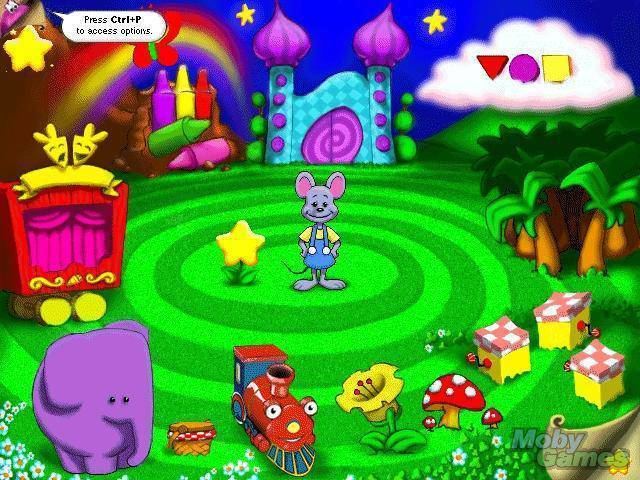
Generally, the games in the series taught language arts, featuring a variety of simple games designed to teach schoolchildren basic reading and spelling skills. Originally, the title character's name was changed to reflect a change in subject, as with Math Rabbit and Writer Rabbit, but it was eventually decided to call the main character "Reader Rabbit", and feature his name in all titles regardless of the subject area covered by a particular game.
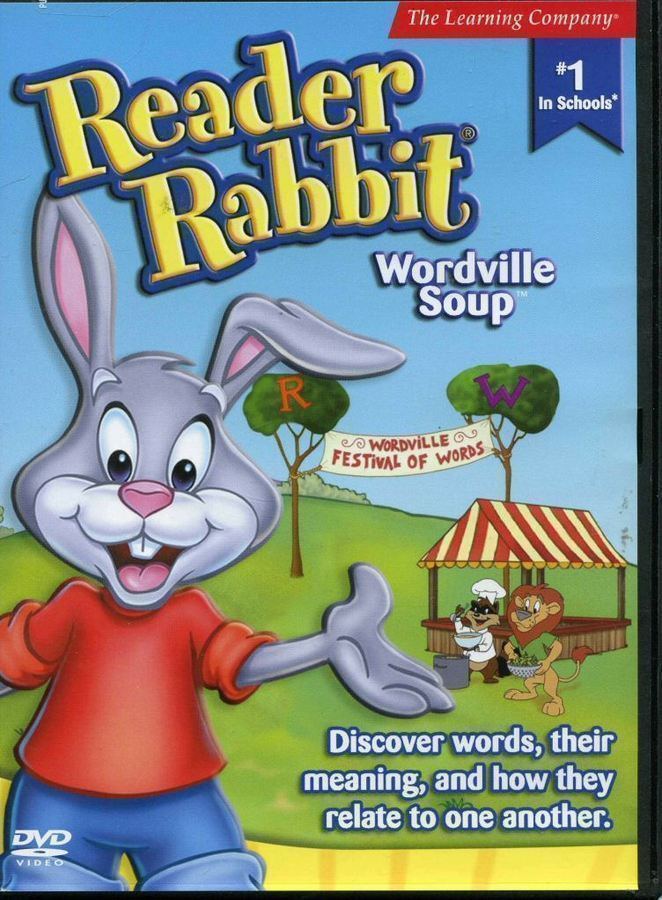
History
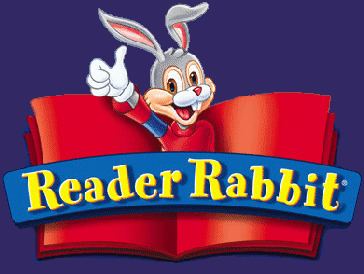
Reader Rabbit was originally conceived by the Grimm sisters and titled Reader Rabbit and the Fabulous Word Factory. It was released in late 1983 or early 1984 (and featured in the 1983 holiday special for The Computer Chronicles), with later versions released in 1984. In 1986, both Reader Rabbit 2.0 and Math Rabbit were released, while 1987 saw the release of Writer Rabbit, with the intention of having a Rabbit series that featured different academic subjects; however, the title soon became locked in as Reader Rabbit, and under that name the developers explored subjects beyond reading. (Math Rabbit would later be renamed to Reader Rabbit Math). Many critics and gaming historians erroneously assert that the Reader Rabbit series officially began in 1986. The 1990s saw an audio cassette release of some of the game's most popular music, entitled Reader Rabbit's Sing Along Favorites In 1995, The Learning Company was bought by Softkey after it made a hostile takeover bid, with the latter company adopting the former company's name. This saw the series go into a new direction, which involved cutting R&D costs, downsizing staff, re-releasing older software with a minimal redesign, and selling cheaper software. The Platinum line of budget titles pushed the retail price for edutainment down to $12.99, and swapped the fancy packaging for a simple jewel case. At this time, SoftKey founder Kevin O'Leary recalled "I’d get a $US12 million order for "Reader Rabbit," it would blow up behind me, the logistics. I couldn’t deliver", noting that he gave Mike Perik half his equity to solve the problem.

In 1996, The Reading Development Library offered an opportunity for young gamers to experience fairy tales via animated storybooks. In 1998, The Learning Company was acquired by bought by Mattel in a $3.6 billion deal. It was part of a move by the toy maker to enter the interactive space; at the time, Mattel had plans to expand the Reader Rabbit franchise into a series of interactive electronic plush toys that could download new content from the internet. The deal turned out to be toxic and Mattel was forced to quickly sell off their properties the following year to avoid bankruptcy; the Reader Rabbit brand was sold to Riverdeep. From 1998–2002. a series called The ClueFinders featuring a Scooby-Doo-like gang of mystery solvers was released to produce similar programming aimed at a more advanced student base, from the 3rd to the 6th grade. The Reader Rabbit Workbook Series.was released in 2003, consisting of three 320-page comprehensive workbooks and five 32-page single-subject workbooks, aimed at children aged 3–7.
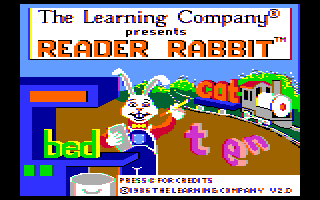
The early 2000s saw the last major PC releases, however,and smaller new games have been released on platforms such as the Wii, while ports of older games have been uploaded to the Internet Archive. By 2003, the Reader Rabbit series had been sold in over 40 countries and translated into 12 different languages. The languages include:
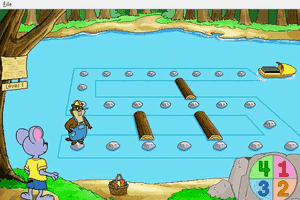
In 2004, LeapFrog and Riverdeep entered into a publishing and distribution agreement for Reader Rabbit, for a series of 5 e-books about phonics to be released under the LeapPad learning system. In 2011, a game for the Nintendo Wii was announced. Houghton Mifflin Harcourt, the successor to Riverdeep after acquisitions and mergers, currently owns the license for the series, and it still sells the products through various distribution networks.
Plot and gameplay
The series centers on the adventures of the titular character and protagonist Reader Rabbit, and his friends such as Sam the Lion and Matilda the Mouse. Reader Rabbit is the protagonist of all the games. He was a greyish blue rabbit. In the 1986–1993 games, he wears a scarlet T-shirt rather than his trademark red sweater. In the 2000s games, he wears a red T-shirt and blue jeans and in the 1995–present games he wears a red and blue striped sweater.
Generally, the series consists of a series of point-and-click adventure games where the player must use their inventory and character interactions to solve a series of puzzles. The series was originally targeted toward reading-based challenges, but has since expanded into other territory too such as maths. Visually, the game consists of a series of static screens, which the player can navigate through by clicking on certain "travel" hotspots. Other hotspots can trigger an interaction with a character, item, song, or minigame.
Art
In the early 90s, an artist Shaowei Liu hand painted many backgrounds and animations, which were then digitized for the games. For the games designed in the mid 90s, artist Frank Cirocco pencil drew the characters and foregrounds and he hired Mick Gray to ink the lineart. For the games made in the late 90s, the characters and backgrounds were worked on by Fred Dianda started as sketches. The sketches were then refined, coloured and animated on computer. For the later games Fred was made the Primary and Lead Artist. Some lineart was worked on by Gerald Broas who used a 2B pencil to hand draw the backgrounds and characters on 12 field animation paper. As for the story books included in the interactive journey and library games, artist Marc Diamond used a LeapPad tablet double spread to sketch the pictures in blue before coloring and shading them. For some of the games in the late 90s, the art was provided by Chester Aldridge's company US Equity Holdings.
Music
Each game consists of some songs that guide the narrative and provide internal monologues of characters. Music composer Scott Lloyd Shelly was particularly proud of composing the music for "Reader Rabbit: 1st Grade" in 1998. Foreign language versions were created for many of the games, in order to give the franchise global appeal. This extended to the games' songs; one number from Reader Rabbit Preschool was translated into French, German, Portuguese, Russian, and Swedish. A VHS called Reader Rabbit Sing-A-Song Adventures was released in 2000, featuring a compilation of the series' best songs.
Educational goals
Educational has always been a key part of the games' design, with the goal being the strike a balance between learning and fun. The titles in the series are researched by educators, parents, children and reading specialists to ensure the software is educational, engaging, and easy-to-use. The programs aimed to promote the use of computers as classroom teaching tools. While Reader Rabbit initially focused on teaching basic reading skills to young children, the series' success led the developers to expand the educational content to other subjects like maths, as well as designing games for older children in preschool, kindergarten, 1st grade, and 2nd grade. These games covered a range of subjects such as reading, phonics, maths, and memory. The A.D.A.P.T.Learning Technology was introduced into Reader Rabbit titles in 1999,; the system contained a series of customisable features that would facilitate the player's learning by: Assessing abilities, Developing skills, Adjusting levels, Providing help, and Tracking progress.
Casettes and DVD
Reader Rabbit Giant Workbooks
These workbooks were published by Learning Company Books and each were supplementary material to a corresponding game. They were republished as Reader Rabbit: Let's Learn by Houghton Mifflin Harcourt.
Reader Rabbit Leapfrog e-books
These e-books are about phonics, which were released under the LeapPad learning system.
Reception
Reader Rabbit is one of the most commercially successful and popular edutainment series of all time, alongside Carmen Sandiego and The Oregon Trail.
Critical reception
In 1991, The Chicago Sun-Times noted that Reader Rabbit was one of the most effective edutainment gaming franchises, and that it had helped many children learn how to read. Computer Shopper appreciated that the games filled a hole in the market; it found that while most reading comprehension titles are aimed at older children, Reader Rabbit uniquely offered games to the pre-school age.
In 1995, The New York Times noted that the flagship title of The Learning Company was "unusual in crossing over from home use to in-school, curriculum-based learning" The newspaper noted in 2002 that the series had become an "educational staple in schools and homes" with a long tradition of "quality educational software". The Boston Herald argues that the games' replayability and enjoyment made their costs immediately justifiable. Krystina Madej of Physical Play and Children’s Digital Games said the series was an 80's pioneer in the budding edutainment genre, following in MECC's The Oregon Trail footsteps to create play-based educational games aimed at young children.
In 2012, PC Mag listed the debut title as one of the 10 Educational PC Games of the 1980s, and noted that new titles were still being released.
Commercial performance
The premiere game in the series, Reader Rabbit and the Fabulous Word Factory, first entered the Billboard charts for Education Computer Software at number 6 in May 1985, and re-entered at number 10 two weeks later. By May 31, 1986, the game had re-entered the charts again and endured a 6-week streak, currently sitting at number 7 and reaching number 3 the previous week, a streak which continued into August by hitting numbers 7, 9, 9, 6, 6, 8, 8, and 3 in the subsequent eight weeks. The game would continue to have a 22-week streak through September, and sell 250,000 units by 1989.
The series was consistently highly commercially successful throughout its run. By 1991, the series had sold 500,000 copies. The Learning Company had gross revenue of $27.5 million at the end of the 1993 financial year, and 41% revenue growth from 1992–3, mostly due to its flagship series Reader Rabbit. Between 1993–2001, the series sold 6 million copies. In the weeks ending January 23, 1998 and October 31, 1998, two and four Reader Rabbit titles were among the 10 top-selling educational titles, respectively. By 2002, the series had sold over 25 million copies.
Awards and nominations
As of 2017, the series won over 175 awards.
